
Illustrative Math Alignment: Grade 7 Unit 9
Putting it All Together
Lesson 5: How Crowded Is this Neighborhood?
Use the following Media4Math resources with this Illustrative Math lesson.
| Thumbnail Image | Title | Body | Curriculum Topic |
|---|---|---|---|
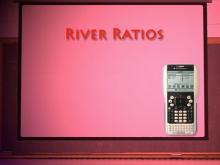
|
VIDEO: Algebra Applications: Variables and Equations, 3 | VIDEO: Algebra Applications: Variables and Equations, 3
TopicEquations DescriptionThe video investigates the geometry of river meanders using the concept of the meander ratio, calculated as the ratio of a river’s sinuous length to its straight-line length. It uses a TI-Nspire calculator to simulate river paths and compute ratios. Key vocabulary includes meander ratio, sinuous length, and geometric modeling. Applications highlight the mathematical modeling of natural phenomena and the occurrence of pi in nature. |
Applications of Equations and Inequalities, Variables and Unknowns, Variable Expressions and Applications of Ratios, Proportions, and Percents |
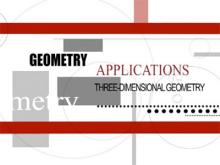
|
VIDEO: Geometry Applications: 3D Geometry | VIDEO: Geometry Applications: 3D Geometry
Topic3D Geometry |
3-Dimensional Figures and Applications of 3D Geometry |

|
VIDEO: Geometry Applications: 3D Geometry | VIDEO: Geometry Applications: 3D Geometry
Topic3D Geometry |
3-Dimensional Figures and Applications of 3D Geometry |

|
VIDEO: Geometry Applications: 3D Geometry | VIDEO: Geometry Applications: 3D Geometry
Topic3D Geometry |
3-Dimensional Figures and Applications of 3D Geometry |

|
VIDEO: Geometry Applications: 3D Geometry, 1 | VIDEO: Geometry Applications: 3D Geometry, 1
Topic3D Geometry DescriptionThis segment introduces Platonic solids, including tetrahedron, cube, and dodecahedron, emphasizing their congruent edges, vertices, and angles. It connects these geometric figures to both natural and man-made structures, setting the stage for exploring 3D geometry applications. This video offers a comprehensive look at the mathematical concepts behind 3D Geometry. Students will gain insights into practical applications and theoretical understanding of the topic, enhancing their ability to visualize and apply these concepts. |
3-Dimensional Figures and Applications of 3D Geometry |

|
VIDEO: Geometry Applications: 3D Geometry, 1 | VIDEO: Geometry Applications: 3D Geometry, 1
Topic3D Geometry DescriptionThis segment introduces Platonic solids, including tetrahedron, cube, and dodecahedron, emphasizing their congruent edges, vertices, and angles. It connects these geometric figures to both natural and man-made structures, setting the stage for exploring 3D geometry applications. This video offers a comprehensive look at the mathematical concepts behind 3D Geometry. Students will gain insights into practical applications and theoretical understanding of the topic, enhancing their ability to visualize and apply these concepts. |
3-Dimensional Figures and Applications of 3D Geometry |

|
VIDEO: Geometry Applications: 3D Geometry, 1 | VIDEO: Geometry Applications: 3D Geometry, 1
Topic3D Geometry DescriptionThis segment introduces Platonic solids, including tetrahedron, cube, and dodecahedron, emphasizing their congruent edges, vertices, and angles. It connects these geometric figures to both natural and man-made structures, setting the stage for exploring 3D geometry applications. This video offers a comprehensive look at the mathematical concepts behind 3D Geometry. Students will gain insights into practical applications and theoretical understanding of the topic, enhancing their ability to visualize and apply these concepts. |
3-Dimensional Figures and Applications of 3D Geometry |

|
VIDEO: Geometry Applications: 3D Geometry, 1 | VIDEO: Geometry Applications: 3D Geometry, 1
Topic3D Geometry DescriptionThis segment introduces Platonic solids, including tetrahedron, cube, and dodecahedron, emphasizing their congruent edges, vertices, and angles. It connects these geometric figures to both natural and man-made structures, setting the stage for exploring 3D geometry applications. This video offers a comprehensive look at the mathematical concepts behind 3D Geometry. Students will gain insights into practical applications and theoretical understanding of the topic, enhancing their ability to visualize and apply these concepts. |
3-Dimensional Figures and Applications of 3D Geometry |

|
VIDEO: Geometry Applications: 3D Geometry, 1 | VIDEO: Geometry Applications: 3D Geometry, 1
Topic3D Geometry DescriptionThis segment introduces Platonic solids, including tetrahedron, cube, and dodecahedron, emphasizing their congruent edges, vertices, and angles. It connects these geometric figures to both natural and man-made structures, setting the stage for exploring 3D geometry applications. This video offers a comprehensive look at the mathematical concepts behind 3D Geometry. Students will gain insights into practical applications and theoretical understanding of the topic, enhancing their ability to visualize and apply these concepts. |
3-Dimensional Figures and Applications of 3D Geometry |
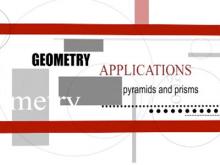
|
VIDEO: Geometry Applications: 3D Geometry, 2 | VIDEO: Geometry Applications: 3D Geometry, 2
Topic3D Geometry DescriptionThis segment explores pyramids, particularly Mayan and Egyptian structures, to distinguish rectangular and square bases. It discusses the volume of truncated pyramids using proportional relationships and introduces the concept of tiered volume reduction through geometric sequences. This video offers a comprehensive look at the mathematical concepts behind 3D Geometry. Students will gain insights into practical applications and theoretical understanding of the topic, enhancing their ability to visualize and apply these concepts. |
3-Dimensional Figures, Pyramids and Applications of 3D Geometry |

|
VIDEO: Geometry Applications: 3D Geometry, 2 | VIDEO: Geometry Applications: 3D Geometry, 2
Topic3D Geometry DescriptionThis segment explores pyramids, particularly Mayan and Egyptian structures, to distinguish rectangular and square bases. It discusses the volume of truncated pyramids using proportional relationships and introduces the concept of tiered volume reduction through geometric sequences. This video offers a comprehensive look at the mathematical concepts behind 3D Geometry. Students will gain insights into practical applications and theoretical understanding of the topic, enhancing their ability to visualize and apply these concepts. |
3-Dimensional Figures, Pyramids and Applications of 3D Geometry |

|
VIDEO: Geometry Applications: 3D Geometry, 2 | VIDEO: Geometry Applications: 3D Geometry, 2
Topic3D Geometry DescriptionThis segment explores pyramids, particularly Mayan and Egyptian structures, to distinguish rectangular and square bases. It discusses the volume of truncated pyramids using proportional relationships and introduces the concept of tiered volume reduction through geometric sequences. This video offers a comprehensive look at the mathematical concepts behind 3D Geometry. Students will gain insights into practical applications and theoretical understanding of the topic, enhancing their ability to visualize and apply these concepts. |
3-Dimensional Figures, Pyramids and Applications of 3D Geometry |

|
VIDEO: Geometry Applications: 3D Geometry, 2 | VIDEO: Geometry Applications: 3D Geometry, 2
Topic3D Geometry DescriptionThis segment explores pyramids, particularly Mayan and Egyptian structures, to distinguish rectangular and square bases. It discusses the volume of truncated pyramids using proportional relationships and introduces the concept of tiered volume reduction through geometric sequences. This video offers a comprehensive look at the mathematical concepts behind 3D Geometry. Students will gain insights into practical applications and theoretical understanding of the topic, enhancing their ability to visualize and apply these concepts. |
3-Dimensional Figures, Pyramids and Applications of 3D Geometry |

|
VIDEO: Geometry Applications: 3D Geometry, 2 | VIDEO: Geometry Applications: 3D Geometry, 2
Topic3D Geometry DescriptionThis segment explores pyramids, particularly Mayan and Egyptian structures, to distinguish rectangular and square bases. It discusses the volume of truncated pyramids using proportional relationships and introduces the concept of tiered volume reduction through geometric sequences. This video offers a comprehensive look at the mathematical concepts behind 3D Geometry. Students will gain insights into practical applications and theoretical understanding of the topic, enhancing their ability to visualize and apply these concepts. |
3-Dimensional Figures, Pyramids and Applications of 3D Geometry |

|
VIDEO: Geometry Applications: 3D Geometry, 2 | VIDEO: Geometry Applications: 3D Geometry, 2
Topic3D Geometry DescriptionThis segment explores pyramids, particularly Mayan and Egyptian structures, to distinguish rectangular and square bases. It discusses the volume of truncated pyramids using proportional relationships and introduces the concept of tiered volume reduction through geometric sequences. This video offers a comprehensive look at the mathematical concepts behind 3D Geometry. Students will gain insights into practical applications and theoretical understanding of the topic, enhancing their ability to visualize and apply these concepts. |
3-Dimensional Figures, Pyramids and Applications of 3D Geometry |

|
VIDEO: Geometry Applications: 3D Geometry, 2 | VIDEO: Geometry Applications: 3D Geometry, 2
Topic3D Geometry DescriptionThis segment explores pyramids, particularly Mayan and Egyptian structures, to distinguish rectangular and square bases. It discusses the volume of truncated pyramids using proportional relationships and introduces the concept of tiered volume reduction through geometric sequences. This video offers a comprehensive look at the mathematical concepts behind 3D Geometry. Students will gain insights into practical applications and theoretical understanding of the topic, enhancing their ability to visualize and apply these concepts. |
3-Dimensional Figures, Pyramids and Applications of 3D Geometry |

|
VIDEO: Geometry Applications: 3D Geometry, 2 | VIDEO: Geometry Applications: 3D Geometry, 2
Topic3D Geometry DescriptionThis segment explores pyramids, particularly Mayan and Egyptian structures, to distinguish rectangular and square bases. It discusses the volume of truncated pyramids using proportional relationships and introduces the concept of tiered volume reduction through geometric sequences. This video offers a comprehensive look at the mathematical concepts behind 3D Geometry. Students will gain insights into practical applications and theoretical understanding of the topic, enhancing their ability to visualize and apply these concepts. |
3-Dimensional Figures, Pyramids and Applications of 3D Geometry |

|
VIDEO: Geometry Applications: 3D Geometry, 2 | VIDEO: Geometry Applications: 3D Geometry, 2
Topic3D Geometry DescriptionThis segment explores pyramids, particularly Mayan and Egyptian structures, to distinguish rectangular and square bases. It discusses the volume of truncated pyramids using proportional relationships and introduces the concept of tiered volume reduction through geometric sequences. This video offers a comprehensive look at the mathematical concepts behind 3D Geometry. Students will gain insights into practical applications and theoretical understanding of the topic, enhancing their ability to visualize and apply these concepts. |
3-Dimensional Figures, Pyramids and Applications of 3D Geometry |

|
VIDEO: Geometry Applications: 3D Geometry, 2 | VIDEO: Geometry Applications: 3D Geometry, 2
Topic3D Geometry DescriptionThis segment explores pyramids, particularly Mayan and Egyptian structures, to distinguish rectangular and square bases. It discusses the volume of truncated pyramids using proportional relationships and introduces the concept of tiered volume reduction through geometric sequences. This video offers a comprehensive look at the mathematical concepts behind 3D Geometry. Students will gain insights into practical applications and theoretical understanding of the topic, enhancing their ability to visualize and apply these concepts. |
3-Dimensional Figures, Pyramids and Applications of 3D Geometry |
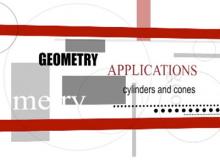
|
VIDEO: Geometry Applications: 3D Geometry, 3 | VIDEO: Geometry Applications: 3D Geometry, 3
Topic3D Geometry DescriptionThis segment examines cylinders, using the Shanghai Tower as a case study. It highlights how adjustments to height and radius affect volume and surface area, demonstrating these principles with geometric calculations and their architectural applications in energy efficiency. This video offers a comprehensive look at the mathematical concepts behind 3D Geometry. Students will gain insights into practical applications and theoretical understanding of the topic, enhancing their ability to visualize and apply these concepts. |
3-Dimensional Figures, Cylinders and Applications of 3D Geometry |

|
VIDEO: Geometry Applications: 3D Geometry, 3 | VIDEO: Geometry Applications: 3D Geometry, 3
Topic3D Geometry DescriptionThis segment examines cylinders, using the Shanghai Tower as a case study. It highlights how adjustments to height and radius affect volume and surface area, demonstrating these principles with geometric calculations and their architectural applications in energy efficiency. This video offers a comprehensive look at the mathematical concepts behind 3D Geometry. Students will gain insights into practical applications and theoretical understanding of the topic, enhancing their ability to visualize and apply these concepts. |
3-Dimensional Figures, Cylinders and Applications of 3D Geometry |

|
VIDEO: Geometry Applications: 3D Geometry, 3 | VIDEO: Geometry Applications: 3D Geometry, 3
Topic3D Geometry DescriptionThis segment examines cylinders, using the Shanghai Tower as a case study. It highlights how adjustments to height and radius affect volume and surface area, demonstrating these principles with geometric calculations and their architectural applications in energy efficiency. This video offers a comprehensive look at the mathematical concepts behind 3D Geometry. Students will gain insights into practical applications and theoretical understanding of the topic, enhancing their ability to visualize and apply these concepts. |
3-Dimensional Figures, Cylinders and Applications of 3D Geometry |

|
VIDEO: Geometry Applications: 3D Geometry, 3 | VIDEO: Geometry Applications: 3D Geometry, 3
Topic3D Geometry DescriptionThis segment examines cylinders, using the Shanghai Tower as a case study. It highlights how adjustments to height and radius affect volume and surface area, demonstrating these principles with geometric calculations and their architectural applications in energy efficiency. This video offers a comprehensive look at the mathematical concepts behind 3D Geometry. Students will gain insights into practical applications and theoretical understanding of the topic, enhancing their ability to visualize and apply these concepts. |
3-Dimensional Figures, Cylinders and Applications of 3D Geometry |

|
VIDEO: Geometry Applications: 3D Geometry, 3 | VIDEO: Geometry Applications: 3D Geometry, 3
Topic3D Geometry DescriptionThis segment examines cylinders, using the Shanghai Tower as a case study. It highlights how adjustments to height and radius affect volume and surface area, demonstrating these principles with geometric calculations and their architectural applications in energy efficiency. This video offers a comprehensive look at the mathematical concepts behind 3D Geometry. Students will gain insights into practical applications and theoretical understanding of the topic, enhancing their ability to visualize and apply these concepts. |
3-Dimensional Figures, Cylinders and Applications of 3D Geometry |

|
VIDEO: Geometry Applications: 3D Geometry, 3 | VIDEO: Geometry Applications: 3D Geometry, 3
Topic3D Geometry DescriptionThis segment examines cylinders, using the Shanghai Tower as a case study. It highlights how adjustments to height and radius affect volume and surface area, demonstrating these principles with geometric calculations and their architectural applications in energy efficiency. This video offers a comprehensive look at the mathematical concepts behind 3D Geometry. Students will gain insights into practical applications and theoretical understanding of the topic, enhancing their ability to visualize and apply these concepts. |
3-Dimensional Figures, Cylinders and Applications of 3D Geometry |

|
VIDEO: Geometry Applications: 3D Geometry, 3 | VIDEO: Geometry Applications: 3D Geometry, 3
Topic3D Geometry DescriptionThis segment examines cylinders, using the Shanghai Tower as a case study. It highlights how adjustments to height and radius affect volume and surface area, demonstrating these principles with geometric calculations and their architectural applications in energy efficiency. This video offers a comprehensive look at the mathematical concepts behind 3D Geometry. Students will gain insights into practical applications and theoretical understanding of the topic, enhancing their ability to visualize and apply these concepts. |
3-Dimensional Figures, Cylinders and Applications of 3D Geometry |

|
VIDEO: Geometry Applications: 3D Geometry, 3 | VIDEO: Geometry Applications: 3D Geometry, 3
Topic3D Geometry DescriptionThis segment examines cylinders, using the Shanghai Tower as a case study. It highlights how adjustments to height and radius affect volume and surface area, demonstrating these principles with geometric calculations and their architectural applications in energy efficiency. This video offers a comprehensive look at the mathematical concepts behind 3D Geometry. Students will gain insights into practical applications and theoretical understanding of the topic, enhancing their ability to visualize and apply these concepts. |
3-Dimensional Figures, Cylinders and Applications of 3D Geometry |

|
VIDEO: Geometry Applications: 3D Geometry, 3 | VIDEO: Geometry Applications: 3D Geometry, 3
Topic3D Geometry DescriptionThis segment examines cylinders, using the Shanghai Tower as a case study. It highlights how adjustments to height and radius affect volume and surface area, demonstrating these principles with geometric calculations and their architectural applications in energy efficiency. This video offers a comprehensive look at the mathematical concepts behind 3D Geometry. Students will gain insights into practical applications and theoretical understanding of the topic, enhancing their ability to visualize and apply these concepts. |
3-Dimensional Figures, Cylinders and Applications of 3D Geometry |

|
VIDEO: Geometry Applications: 3D Geometry, Antiprisms | VIDEO: Geometry Applications: 3D Geometry, Antiprisms
Topic3D Geometry DescriptionThis video focuses on antiprisms, with One World Trade Center serving as a striking example. An antiprism is a polyhedron with two congruent polygonal bases rotated relative to each other and triangular sides connecting them. Key vocabulary includes antiprism, square base, triangular sides, and octagon. The geometry of the Freedom Tower is discussed, including its octagonal slices and symbolic height of 1776 feet. Applications highlight the dual role of the building as both an office space and a monument, emphasizing how its antiprism structure represents unity and homage to the Twin Towers. |
3-Dimensional Figures |

|
VIDEO: Geometry Applications: 3D Geometry, Rectangular Prisms | VIDEO: Geometry Applications: 3D Geometry, Rectangular Prisms
Topic3D Geometry |
Rectangular Prisms |

|
VIDEO: Geometry Applications: 3D Geometry, Rectangular Prisms | VIDEO: Geometry Applications: 3D Geometry, Rectangular Prisms
Topic3D Geometry |
Rectangular Prisms |

|
VIDEO: Geometry Applications: 3D Geometry, Rectangular Prisms | VIDEO: Geometry Applications: 3D Geometry, Rectangular Prisms
Topic3D Geometry |
Rectangular Prisms |

|
VIDEO: Geometry Applications: 3D Geometry, Triangular Prisms | VIDEO: Geometry Applications: 3D Geometry, Triangular Prisms
Topic3D Geometry |
Triangular Prisms |

|
VIDEO: Geometry Applications: 3D Geometry, Triangular Prisms | VIDEO: Geometry Applications: 3D Geometry, Triangular Prisms
Topic3D Geometry |
Triangular Prisms |
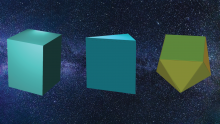
|
VIDEO: Geometry Applications: 3D Geometry, What Are Prisms? | VIDEO: Geometry Applications: 3D Geometry, What Are Prisms?
Topic3D Geometry |
Rectangular Prisms and Triangular Prisms |

|
VIDEO: Geometry Applications: 3D Geometry, What Are Prisms? | VIDEO: Geometry Applications: 3D Geometry, What Are Prisms?
Topic3D Geometry |
Rectangular Prisms and Triangular Prisms |

|
VIDEO: Geometry Applications: 3D Geometry, What Are Prisms? | VIDEO: Geometry Applications: 3D Geometry, What Are Prisms?
Topic3D Geometry |
Rectangular Prisms and Triangular Prisms |

|
VIDEO: Geometry Applications: 3D Geometry, What Are Prisms? | VIDEO: Geometry Applications: 3D Geometry, What Are Prisms?
Topic3D Geometry |
Rectangular Prisms and Triangular Prisms |
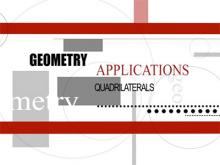
|
VIDEO: Geometry Applications: Quadrilaterals | VIDEO: Geometry Applications: Quadrilaterals
TopicQuadrilaterals |
Applications of Quadrilaterals |

|
VIDEO: Geometry Applications: Quadrilaterals | VIDEO: Geometry Applications: Quadrilaterals
TopicQuadrilaterals |
Applications of Quadrilaterals |

|
VIDEO: Geometry Applications: Quadrilaterals | VIDEO: Geometry Applications: Quadrilaterals
TopicQuadrilaterals |
Applications of Quadrilaterals |
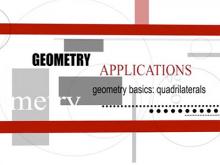
|
VIDEO: Geometry Applications: Quadrilaterals, 1 | VIDEO: Geometry Applications: Quadrilaterals, 1
TopicQuadrilaterals DescriptionDescription: Quadrilaterals are fundamental in structural design, as seen in examples like Stonehenge and home layouts. Their prevalence in construction stems from properties like parallel sides and stability, making them ideal for creating functional spaces. |
Applications of Quadrilaterals |

|
VIDEO: Geometry Applications: Quadrilaterals, 1 | VIDEO: Geometry Applications: Quadrilaterals, 1
TopicQuadrilaterals DescriptionDescription: Quadrilaterals are fundamental in structural design, as seen in examples like Stonehenge and home layouts. Their prevalence in construction stems from properties like parallel sides and stability, making them ideal for creating functional spaces. |
Applications of Quadrilaterals |

|
VIDEO: Geometry Applications: Quadrilaterals, 1 | VIDEO: Geometry Applications: Quadrilaterals, 1
TopicQuadrilaterals DescriptionDescription: Quadrilaterals are fundamental in structural design, as seen in examples like Stonehenge and home layouts. Their prevalence in construction stems from properties like parallel sides and stability, making them ideal for creating functional spaces. |
Applications of Quadrilaterals |

|
VIDEO: Geometry Applications: Quadrilaterals, 1 | VIDEO: Geometry Applications: Quadrilaterals, 1
TopicQuadrilaterals DescriptionDescription: Quadrilaterals are fundamental in structural design, as seen in examples like Stonehenge and home layouts. Their prevalence in construction stems from properties like parallel sides and stability, making them ideal for creating functional spaces. |
Applications of Quadrilaterals |

|
VIDEO: Geometry Applications: Quadrilaterals, 1 | VIDEO: Geometry Applications: Quadrilaterals, 1
TopicQuadrilaterals DescriptionDescription: Quadrilaterals are fundamental in structural design, as seen in examples like Stonehenge and home layouts. Their prevalence in construction stems from properties like parallel sides and stability, making them ideal for creating functional spaces. |
Applications of Quadrilaterals |

|
VIDEO: Geometry Applications: Quadrilaterals, 1 | VIDEO: Geometry Applications: Quadrilaterals, 1
TopicQuadrilaterals DescriptionDescription: Quadrilaterals are fundamental in structural design, as seen in examples like Stonehenge and home layouts. Their prevalence in construction stems from properties like parallel sides and stability, making them ideal for creating functional spaces. |
Applications of Quadrilaterals |

|
VIDEO: Geometry Applications: Quadrilaterals, 2 | VIDEO: Geometry Applications: Quadrilaterals, 2
TopicQuadrilaterals DescriptionDescription: This segment examines quadrilaterals in modern architecture, such as Frank Lloyd Wright’s Fallingwater. It explores how rectangles derive stability and maximum area from right triangles, offering applications in both aesthetic and structural design. |
Applications of Quadrilaterals |

|
VIDEO: Geometry Applications: Quadrilaterals, 2 | VIDEO: Geometry Applications: Quadrilaterals, 2
TopicQuadrilaterals DescriptionDescription: This segment examines quadrilaterals in modern architecture, such as Frank Lloyd Wright’s Fallingwater. It explores how rectangles derive stability and maximum area from right triangles, offering applications in both aesthetic and structural design. |
Applications of Quadrilaterals |

|
VIDEO: Geometry Applications: Quadrilaterals, 2 | VIDEO: Geometry Applications: Quadrilaterals, 2
TopicQuadrilaterals DescriptionDescription: This segment examines quadrilaterals in modern architecture, such as Frank Lloyd Wright’s Fallingwater. It explores how rectangles derive stability and maximum area from right triangles, offering applications in both aesthetic and structural design. |
Applications of Quadrilaterals |